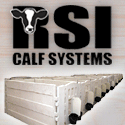 |
 |

|
|
|
Iowa Ag News Headlines |
 |
USDA: Baling Cornstalks Detrimental to Soil and Wallet
Iowa Ag Connection - 11/12/2018
Baled crop residue is often used for livestock bedding or feed, but leaving it in the ground provides the best value for the resource.Iowa farmers who bale cornstalks for livestock bedding or sell it to other livestock producers are entering into a losing proposition
due to the lost nutrient value and soil health benefits, according to officials with USDA's Natural Resources Conservation Service (NRCS).
Based on current commodity prices and the value in each bale, Neil Sass, agronomist with NRCS in West Union, says farmers should leave crop residue in the field. "The plant residue left in the field after harvest is a valuable resource," says Sass. "The value in
cornstalks can be better used for reducing soil erosion, providing extra organic matter content in the soil, and contributing nutrients back to the soil."
One ton cornstalk bales are currently selling for $20-$30 per bale across Iowa. The latest estimates show that each one ton bale has a value of about $32 when considering the nutrients ($7/ton), custom raking ($3/ton), and custom baling ($22/ton).
Harvesting Crop Residue: What is it worth?
Sass says farmers should also consider the nutrient value of hay, given today's prices. "Selling hay bales or cornstalk bales and removing them from the farm at current prices is equivalent to having a fertilizer sale," he said. "Rather than selling them, farmers should
consider using them for bedding."
Rick Bednarek, state soil scientist with NRCS, says plant residue contributes directly to soil performance through added organic matter. "The additional organic matter crop residue provides helps the soil's nutrient availability, nutrient holding capacity, and water
holding capacity," he said.
"Crop residue also protects the soil from the impact of raindrops, helping to maintain soil aggregate stability, which affects infiltration, aeration and drainage," he said.
Farmers who decide to harvest crop residue are encouraged to adopt the following practices:
- Reduce or eliminate tillage operations.
- Adjust crop rotations to minimize low residue crops.
- Grow cover crops.
- Add manure to fertility plan.
For more information about conservation planning and financial assistance programs, contact your local NRCS office or go online to www.ia.nrcs.usda.gov.
|
 |


|
 |
|
Copyright © 2024 - Farms.com. All Rights Reserved. |
 |
|